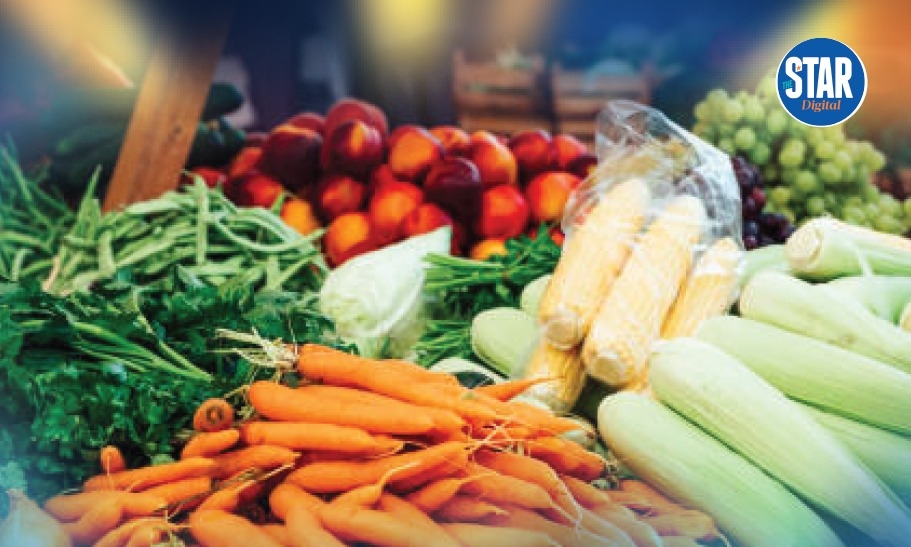
Factors Affecting Retail Prices in Kenya
The two most agreed-upon factors were transport costs and weather conditions.
According to World Bank, governments should use this to get their fiscal houses in order
In Summary

Audio By Vocalize
 Wheat farming in Narok /FILE
Wheat farming in Narok /FILE
Global commodity prices, inclusive of some food crops, are projected to hit the lowest level in six years in 2026, the fourth consecutive year of decline, the World Bank projects.
The latest World Bank Group’s Commodity Markets Outlook indicates prices are forecast to drop by at least seven per cent in both 2025 and 2026, driven by weak global economic growth, a growing oil surplus and persistent policy uncertainty.
Falling energy prices are helping ease global inflation, with countries such as Kenya equally enjoying a low cost of living where inflation remained at 4.6 per cent last month.
World Bank also notes that lower rice and wheat prices have helped make food more affordable in some developing countries.
Despite the recent declines, however, commodity prices remain above pre-pandemic levels, with prices in 2025 and 2026 projected to be 23 per cent and 14 per cent higher, respectively, than in 2019.
“Commodity markets are helping to stabilise the global economy,” said Indermit Gill, the World Bank Group’s Chief Economist and Senior Vice President for Development Economics.
“Falling energy prices have contributed to the decline in global consumer-price inflation. But this respite will not last. Governments should use it to get their fiscal house in order, make economies business-ready and accelerate trade and investment.”
The global oil glut has expanded significantly this year and is expected to rise next year to 65 per cent above the most recent high, in 2020.
This is on the back of a slower growth in oil demand as that of electric and hybrid vehicles grows, with oil consumption stagnating in China.
Brent crude prices are forecast to fall from an average of $68 per barrel in 2025 to $60 next year—a five-year low. Overall, energy prices are forecast to fall by 12 per cent in 2025 and a further 10 per cent in 2026.
Kenyan consumers are however unlikely to enjoy gains from the lower crude prices as the country remains tied to the Government-to-Government contracts with Gulf majors until 2028.
This is in addition to high taxes at the pump, including the recently increased Road Maintenance Levy which went up from Sh18 to Sh25 per litre of petrol and diesel in July 2024, a Sh7 increase.
It is mulling a further raid at the pump to raise revenue and fund infrastructure projects. The Energy and Petroleum Regulatory Authority (EPRA) also recently increased oil dealer’s margins and fuel transport tariffs as a way of ensuring return-on-investment for industry players.
It is currently undertaking public consultation on the review of the Kenya Pipeline Company transportation and secondary storage tariffs for the tariff control period 2025-26 and 2027-28.
This is inline with the Energy Act, which requires the authority to review and approve existing pipeline tariffs every three years.
Meanwhile, food prices are easing with declines of 6.1 per cent projected in 2025 and 0.3 per cent in 2026, but high prices will mean production in Kenya, including manufacturing costs will remain elevated amid high taxation.
According to the World Bank, Soybean prices are falling in 2025 because of record production and trade tensions but are expected to stabilise over the next two years.
Meanwhile, coffee and cocoa prices are forecast to fall in 2026 as supply conditions improve. However, fertiliser prices are projected to surge 21 per cent in 2025, reflecting higher input costs and trade restrictions, before easing five per cent in 2026.
“These increases are likely to further erode farmers’ profit margins and raise concerns about future crop yields,” World Bank notes.
Precious metals have on the other hand reached record highs in 2025, fuelled by demand for safe-haven assets and continued central bank purchases.
The price of gold, widely viewed as a safe haven during times of economic uncertainty, is expected to increase by 42 per cent in 2025.
At the Nairobi Securities Exchange, local investors have joined the scramble for the gold exchange-traded funds (ETFs) amid the global rush which has driven prices to record levels.
The Absa NewGold ETF, which mirrors the price of gold in the global market, surged past the Sh5,000 mark in recent weeks, before easing to Sh4,935 as of Tuesday.
Gold prices are projected to increase by a further five per cent next year, leaving them at nearly double their 2015-2019 average. Silver prices are also expected to hit a record annual average in 2025, rising by 34 per cent and further eight per cent in 2026.
Greater-than-expected oil output from OPEC+ could deepen the oil glut and exert additional downward pressure on energy prices.
Electric vehicle sales, which are expected to increase sharply by 2030, could further depress oil demand.
Conversely, geopolitical tensions and conflicts could push oil prices higher and boost demand for safe-haven commodities such as gold and silver, the World Bank notes.
“In the case of oil, the market impact of additional sanctions could also lift prices above the baseline forecast. Extreme weather from a stronger-than-expected La Niña cycle could disrupt agricultural output and increase electricity demand for heating and cooling, adding further pressure to food and energy prices,” it said.

The two most agreed-upon factors were transport costs and weather conditions.